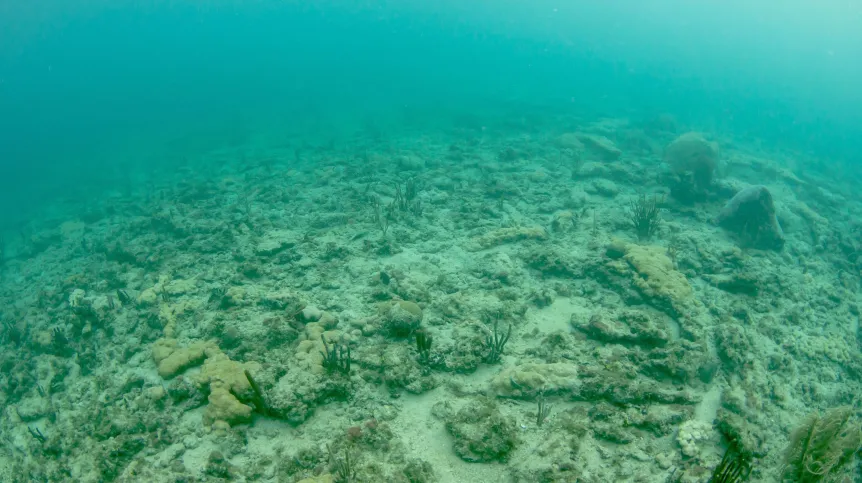
Extraction of elements used in modern technologies from the ocean floor can have a negative impact on the environment and threaten marine biodiversity.
Scientists from 30 institutions around the world, including the Faculty of Biology and Environmental Protection of the University of Lodz, are carrying out research to prevent this.
The project concerns exploration of the Northeast Pacific Ocean. The area is known to scientists and international mining companies as the Clarion-Clipperton Fracture Zone. It is extremely important economically due to the presence of ores of strategic elements such as cobalt, molybdenum, manganese, lithium and copper.
Professor Magdalena Błażewicz from the Department of Invertebrate Zoology and Hydrobiology, University of Lodz said: “Resources of these minerals on land are not only modest, but also difficult to reach, while there are a lot of them on the ocean floor, and this area has the most.”
She added that extracting metal ores from the ocean floor is neither easier nor cheaper than from cobalt deposits located, for example, in the Republic of Congo, but it is inevitable.
Błażewicz continued: “We are talking about work at a depth of 5000 meters, where the pressure reaches 500 atmospheres. Engineers who construct prototypes of vehicles working on the ocean floor believe that from a technical point of view it is easier to cope with vacuum in space than with such high pressure under water. Technologically, obtaining elements from the ocean floor is not simple, but the demand in many industries is enormous.”
These elements are used to produce long-life, fast-charging batteries, necessary in all mobile devices. The pressure to obtain their ores from the ocean floor is therefore enormous, but these activities should be planned in detail and carried out in an environmentally safe manner.
Błażewicz said: “The question is what impact such mining activity will have on the environment, because the effects of mining on land are unfortunately well known. The area of the Central Pacific is practically unknown to science, which makes it impossible to assess how and to what extent deep-water mining will affect its ecosystems. Not only are we not familiar with its topography, but also the environmental conditions that shape this environment. Moreover, we know little about the marine organisms that live there, what food niche they use and what conditions they need to live and create healthy and stable populations.”
Consequently, an international project (Ecological Aspects of Deep-Sea Mining) was initiated in a consortium of more than thirty institutions from 10 countries. The project objective is to assess biodiversity in this area, but also to assess what effects anthropogenic activities may have. Researchers involved in the project studied the impact of an industrial attempt to obtain polymetallic concretions in the Clarion Clipperton Fracture Zone and attempted to assess how it might affect its ecosystems.
The ocean floor is covered with a layer of soft sediments, so it is possible to imagine that mining work with the use of 'harvesters' will move them, and the currents of water will transport them to other, perhaps distant places. Studies have been conducted to see how far and in which direction bottom sediments can be transported.
Professor Błażewicz said: “Information on the direction of transport of bottom sediments is extremely important. Individual areas of the ocean floor are populated by disparate assemblages of organisms, including filter organisms such as sponges, mussels, and moss animals. A large amount of sediment in the water can clog their filtration apparatus and lead to their imminent death.”
She adds that to assess whether the ecosystem will be able to regenerate after completed mining activities, we must be sure that the organisms living there can move from a biodiversity reservoir designated by humans to an area disturbed by economic activities.
Professor Błażewicz studies tanaids, very small marine crustaceans with very limited possibilities of movement. She said: “Their very limited mobility makes them a model group. Such animals are excellent determinants of genetic connectivity between the area designated for mining and the reservoir of biodiversity. They are therefore the determinant of the most restrictive approach to the problem.”
Błażewicz is convinced that with the current advanced technology and adequate funding, scientists are able not only able to reliably assess the effects of industrial obtaining concretions from the ocean floor and propose solutions that will minimise its negative impact.
She said: “Our research shows that the area designated as a reservoir of biodiversity is very poor in terms of biodiversity, suggesting that it will not be a good reservoir for a regenerating marine ecosystem.”
She added that the protected areas should be very carefully designated and scientists should be offered a little more time to conduct research before mining activities begin as they may have irreversible and dramatic effects on the environment. (PAP)
PAP - Science in Poland, Bartłomiej Pawlak
bap/ ktl/ kap/
tr. RL













